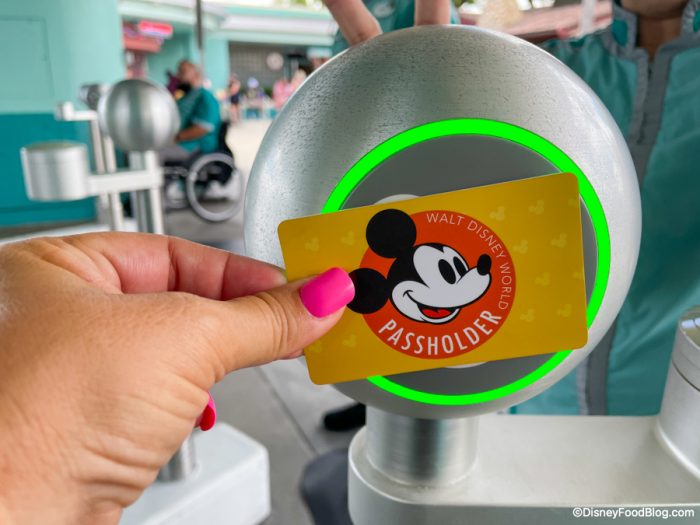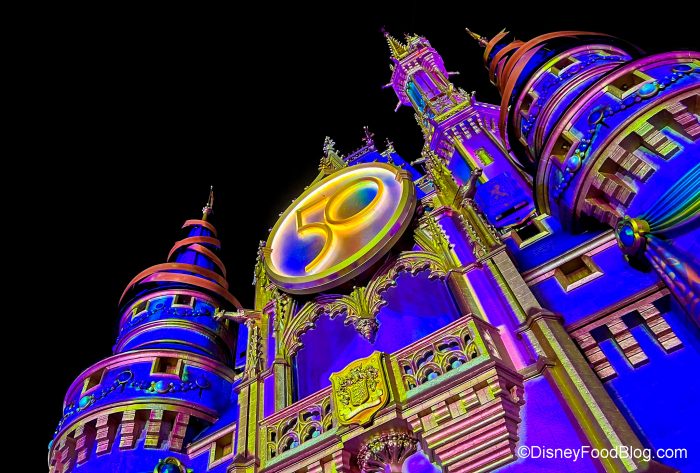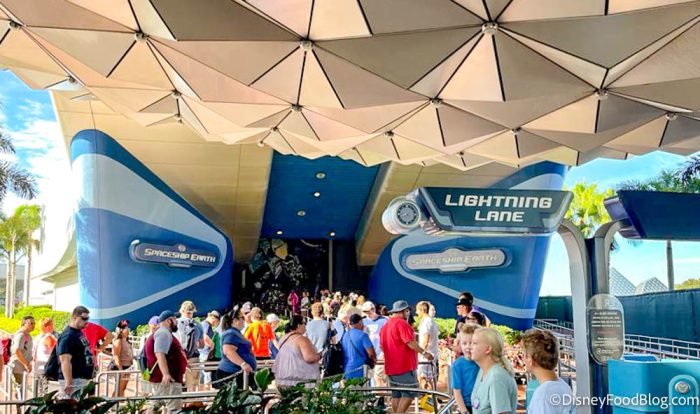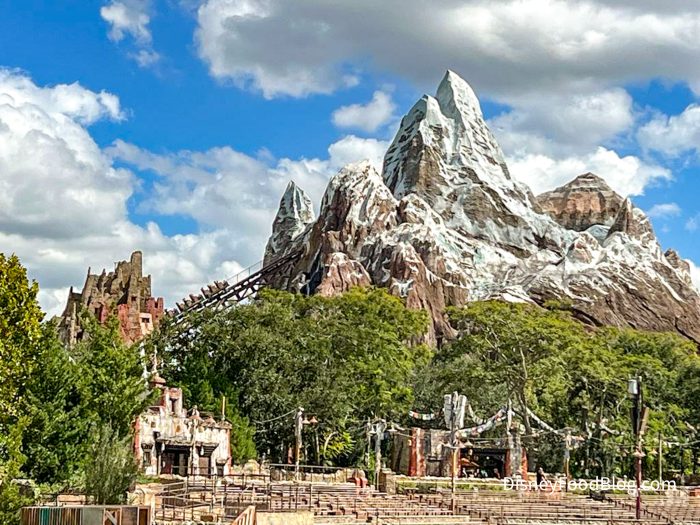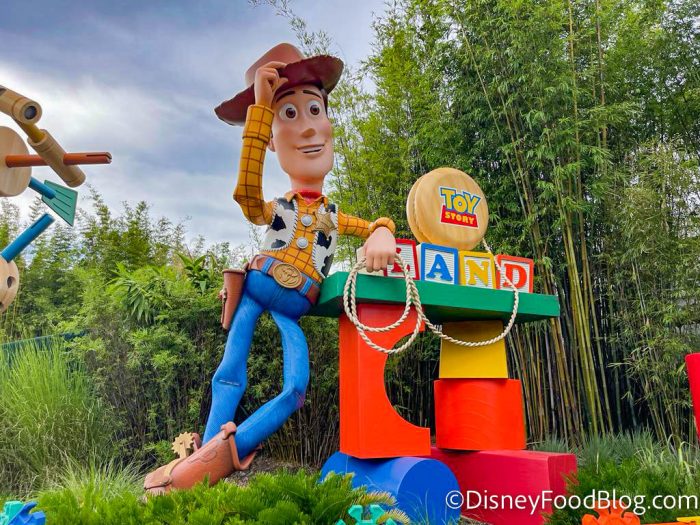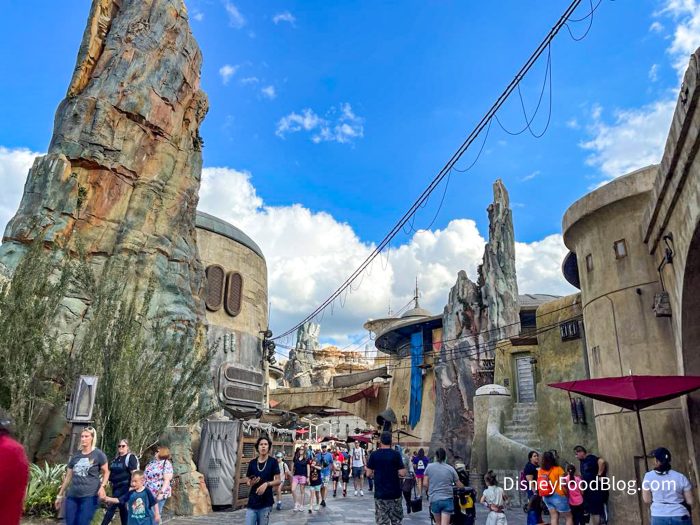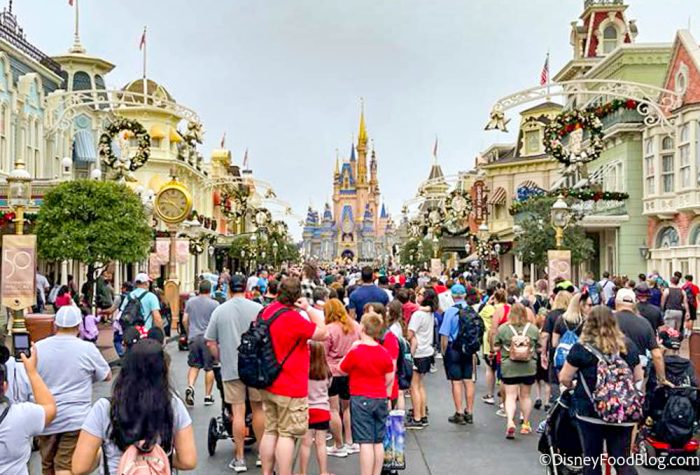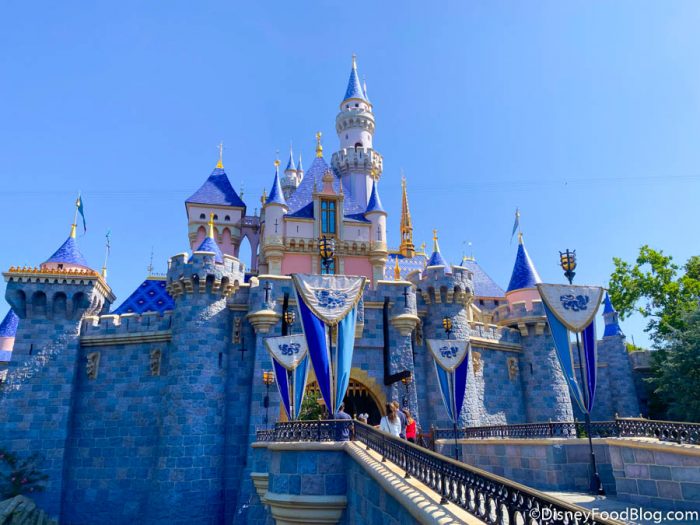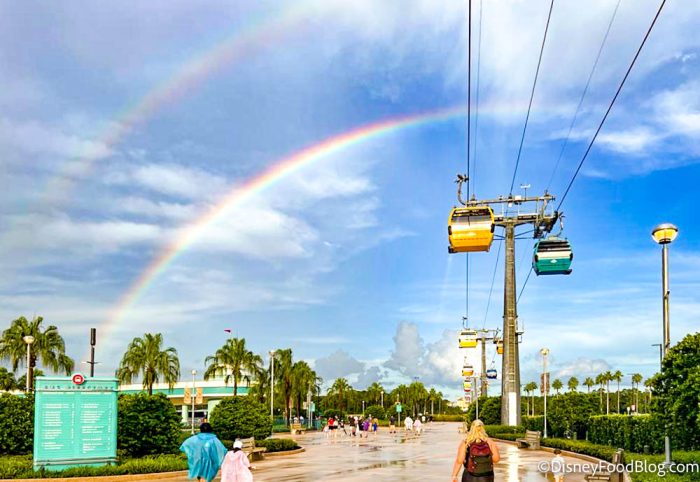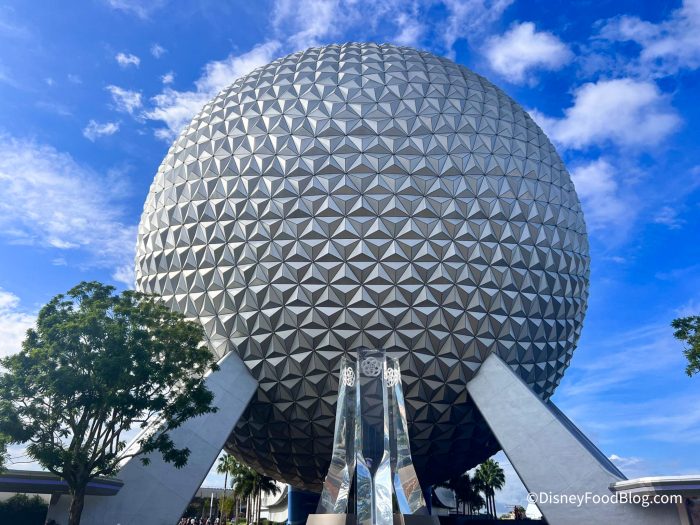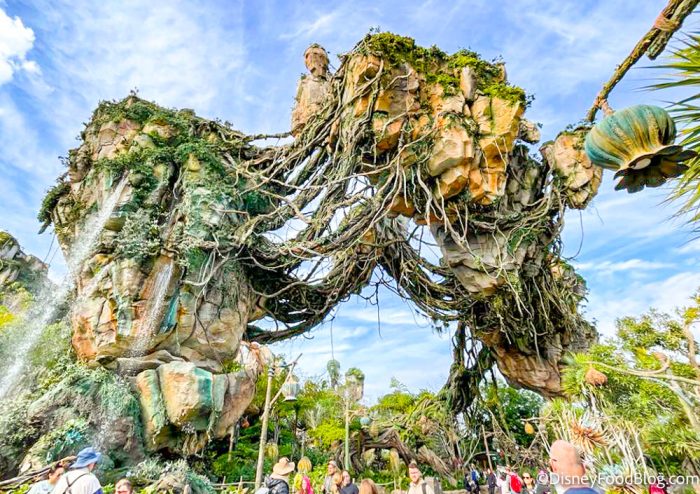What exactly is going on with Disney World’s price increases and what many are perceiving as an endless quest to get more and more money out of guests?
We are hearing from many readers who say they are swearing off visiting the parks because of it. So…has it always been this way? Will it affect your upcoming trips? We’re taking an intense look at Disney World prices.
First, we need to look at the history. When Magic Kingdom first opened in 1971 — a week’s worth of park admission, hotel room stays at Disney’s Contemporary Resort, meals, airfare, and a recreational addition or two — could end up costing one guest a little over $500 – which is the equivalent of $3,600 today. But now, a single person doing the EXACT same type of vacation will spend well over $7,000.
And while we expect incremental price increases, we’re seeing viral graphs of Disney’s ticket prices being raised nearly 4000% since Magic Kingdom opened. And there are a few recent, seemingly drastic, changes in pricing that are sparking a negative sentiment among Disney fans.
So we’re diving into these questions:
- Are these price increases actually abnormal for Disney?
- Are the price increases outpacing inflation? And if so, is that uncharacteristic for Disney?
- What are Disney fans actually mad about?
- Can and will Disney keep increasing prices at this rate?
You might be surprised by what we discovered.
Are these price increases actually abnormal for Disney?
The short answer to this question is no. At least not for the last 20 years.
If you look at ticket pricing (which we can because our friends at AllEars.net have the most comprehensive ticket database online right now), there are three pretty distinct sections to that pricing graph since 1971.
- Up until the early 1980s price increases were steady but low
- Between 1982 and about 2005 (incidentally that’s the year the Disney Dining Plan started) we see an uptick in the graph
- From 2005 to now we can see a sharper incline
But these steady increases aren’t new, nor are they drastic compared to those over the past 15+ years.
Kevin Yee at Micechat has a very prescient chart, created in 2013, which looked at Disney World ticket and hotel price increases between 2003 and 2013, and then extrapolated the predicted prices for 2023.
A one-day ticket in 2003 cost $50. In 2013, $95. Extrapolating the same 90% increase that occurred between 2003 and 2013 to predict next year’s price, the ticket would cost $180. A one-day ticket on the Disney World website is currently priced at $109-159 per day. So, it’s actually LESS than predicted based on the previous 10 years’ price increases.
And you’d be surprised with several of the hotel predictions in the same article. 10 years ago, a 2023 Polynesian Village Resort room was predicted to cost at $1,056 based on the 88% increase seen between 2003 and 2013, and actual prices for that 2023 room average around $1000 right now. Just a little under what was predicted way back in 2013 using the previous 10 years’ numbers.
So, although they may seem like it, the current price increases in baseline vacation costs – tickets and hotel – are not abnormal or out of character for Disney World this year, and keep pretty well in line with what we’ve seen for the past nearly 20 years.
Are the price increases outpacing inflation? And if so, is that uncharacteristic for Disney?
The answer to this one is a resounding YES. Since that early 1980’s spike, Disney’s price increases have always outpaced inflation and the gap has been widening.
But it is worth mentioning that you’re not paying for the same thing you were paying for in 1971. Disney World has added three more parks, countless restaurants, the Disney Springs shopping district, extra security, and LOTS more infrastructure since 1971. So an apples-to-apples comparison when it comes to keeping in line with inflation isn’t necessarily valid. That said, Disney would likely still be well outpacing inflation on their pricing even with that adjustment…and they have been for nearly 30 years.
So if the pricing structure and price increases aren’t different than they have been for 30 years (trust us, if you go into the depths of the internet, you will find the exact same “Disney World’s getting too expensive” arguments on the Disney message boards in 2007 that you’re seeing now on TikTok), what’s everyone so mad about? And what’s the justification?
What feels abnormal, and what we think is really the root of the price gouging argument is the switch from free to paid services en masse. It all came out of nowhere right after the pandemic.
- MagicBands were free. Now they’re not.
- FastPass, Disney’s “bypass the long queue lines” service was free. Now it’s not.
- Through the Magical Express, transportation to and from the airport was free for Disney hotel guests. Now it’s not.
- Park tickets have become date-based and surge priced…with Disney quietly upping the number of days in the higher price tier.
- And on top of that, we have park hopping restrictions and required park passes – making life not necessarily MORE expensive for guests, but more annoying for sure…and more restrictive to boot. So we feel like we’re getting a raw deal for the same ticket price. After all, time is money in Disney World…and limiting my flexibility on property is putting restrictions on my time in certain parks.
Why is Disney World making so many revenue-based changes right now?
Let’s get a little more background here: A lot of people don’t realize this, but the Disney Parks, Experiences, and Products arm of the Walt Disney Company is really its cash cow. This department historically shores up the rest of the company financially, and it’s an area where relatively small changes can make a huge impact in profitability for the company as a whole.
DPEP brings in 33% of the company’s revenue, but provides 62% of its operating income, which means the profitability of the parks contributes in a major way to making the whole company sustainable. So that’s possibly why we’re seeing so many revenue-based changes in the parks sector specifically.
We know Disney took a big hit during the pandemic, shutting down their parks and cruise line worldwide (and since we know that’s where a huge chunk of operating income is generated, then we know the hit was bigger than it maybe looked from the outside). According to information released when The Walt Disney Company reported its earnings for the fiscal fourth quarter of 2020, “The most significant adverse impact in the current quarter and year from COVID-19 was approximately $2.4 billion and $6.9 billion, respectively, on operating income at our Parks, Experiences and Products segment due to revenue lost as a result of the closures or reduced operating capacities.”
So, they started making changes, and quickly saw success. In the fiscal third quarter of 2022, Disney reported that its revenue increased to $7.4 billion compared to $4.3 billion in the prior-year quarter; and segment operating income increased by $1.8 billion over the prior-year quarter. This was due to the Disney Parks.
In Disney’s own words: “Operating income growth at our domestic parks and experiences was due to higher volumes and increased guest spending. Higher volumes were due to increases in attendance, occupied room nights, and cruise ship sailings… Guest spending growth was due to an increase in average per capita ticket revenue and higher average daily hotel room rates. The increase in average per capita ticket revenue was due to the introduction of Genie+ and Lightning Lane in the first quarter of the current fiscal year… Higher costs were primarily due to volume growth, cost inflation, and new guest offerings.”
So, Disney is making a lot of profits with its parks. Perhaps the choices being made on cutting free perks and introducing fee-based programs is part of Disney battening the hatches for a recession that may or may not drag on?
Disney’s official reasoning for the changes is basic supply and demand. Disney says that most days, the number of people who want to go to Disney World parks exceeds the capacity in the parks. So, Disney has to do something to regulate the crowds. And, according to them, these changes are part of the regulation.
Former Disney CEO Bob Chapek said during Disney’s last earnings call that the changes and price increases guests are seeing directly align with consumer demand: “It’s all up to the consumer. If consumer demand keeps up, then we act accordingly. And if we see a softening, which we don’t think we’re gonna see, then we can act accordingly as well. We’re very flexible.”
It’s no secret that the Disney parks have been inundated by revenge travelers – people who had trips canceled and postponed by the pandemic – since they started loosening the guest capacity reigns and pandemic protocols. Disney World used to have reliable “down times” – seasons when kids were in school and parks were less packed. But those seasons have all but disappeared.
Our first peek at what could be called a “down time” since the beginning of 2021 came at the end of August this year and into September. But the crowds picked back up for 3-day weekends this fall, and we are already seeing big holiday season crowds.
But, there could be another part to the “demand” story that Disney is being a little less public about.
It’s starting to become clear that there are two main types of Disney park-goer: the die-hard (these are the Annual Passholders, the families that go once a year or more, the DVC members, the Disney adults who move to Orlando to be near their happy place), and the “family from Denver” – the current circulating term coined by former Disney CEO Bob Chapek for the families who have never been to Disney World, or who travel there once every few years versus on the regular.
And these two types have different values to Disney’s bottom dollar. In a 2020 earnings call, Chapek said “different guests, depending on where they’re coming from, have different relative values in terms of their contribution as a guest to the park. And typically, someone who travels and stays for five to seven days is marginally more valuable to the business than someone who comes in on an annual pass and stays a day or two and consumes less, you know, merchandise and food and beverage.”
Now, this isn’t a new concept. Disney fans who go all the time tend to know the secrets to save money, and get as much out of the parks as they can for the lowest possible cost. When your hobby costs this much, you’ve gotta cut a few corners here and there and cut back on expensive meals and high-cost souvenirs. But when you’re visiting for your once-in-a-lifetime adventure…you’re more willing to spend big bucks to make those once in a lifetime memories.
In 2022, Disney reported an “unfavorable attendance mix” at Disneyland Resort which impacted their financial results for one quarter. While not explicitly stated, the “unfavorables” in this scenario were widely understood to be Annual Passholders.
According to Chapek, it really comes down to a sense of balance. He noted that some superfans are Annual Passholders and use the parks “as their personal playground.” Chapek said that they “love that” and “celebrate that.” But he said that they also have to make sure that there’s “room in the park for the family from Denver that comes once every five years.”
But as a business, Disney may actually be looking for ways to skew the majority in the favor of that “family from Denver”.
The systems put in place during and after the pandemic give Disney a lot more control over the type of guest they allow in the park. Park Passes allow Disney to regulate Annual Passholder, Hotel Guest, and Regular Park Ticket capacity separately – so it’s up to them how many of each type of guest are allowed into the parks each day. This has actually sparked two lawsuits against Disney by Annual Passholder groups.
Annual Passholder programs have been paused or severely revamped on both coasts, with perks for passholders being reduced. It’s currently very difficult to buy a top-level Annual Pass for Disneyland, and nearly impossible to buy one for Disney World. Disney guests who aren’t Florida residents currently have no way to buy an annual pass at all.
Genie+ being a paid service is more of a financial impact on the frequent visitor and annual passholder, who are visiting the parks regularly, than it will be on the “family from Denver” who only has to pay that cost on their infrequent visits.
And these changes could give Disney the tools it needs to reshape the demographics of the parks – lower crowds overall with a higher percentage of high-dollar customers.
After all – if demand is so high – and supply can’t meet that demand…why don’t they just build a fifth park? While that is, I’m sure, a very nuanced question…one answer could easily be that they don’t just want more guests…they want more of the right guests and fewer of the wrong ones.
Can they keep up this level of price hike? And will they?
Price increases will likely continue as they have for the last 20+ years. The things Disney has to buy to make the parks run are getting more expensive, and Disney is growing – adding new attractions, new hotels, and potentially even new lands.
But the real question is whether Disney will keep up the changes that make visiting the parks more difficult for the loyal fans – as formerly free services become costly additions to a Disney trip. Since that’s what people are actually upset about, even though those tend to get lumped into a more generic “price increases” complaint.
And the answer is…they probably want to. But can they? The strategy of courting more profitable park guests has been working so far this year based on Disney’s earnings calls. So we’ll likely see more efforts to smooth the way for first-time and sporadic visitors as we go through the next several years.
What happens for the “family from Denver” during a recession? Will they go to Disney World, or will this once in a lifetime vacation be one of the first things on the budgetary chopping block? And if their higher-value clientele slow their roll, will Disney have to depend on their super fans to keep coming to the parks when the going gets tough?
Disney claims that they don’t see signs of slowing when it comes to park demand, and that means it’s likely that their strategy to prioritize the high value guests will continue as a long-term growth strategy that will pay dividends in coming decades. Recession or not.
Ways to Save
Now what does that mean for you? There are still ways to save, and lots of tips to employ to make sure you get the biggest bang for your buck on a trip to Disney World, whether it’s a long weekend staycation or a spring break splurge.
- Start with a rational, reasonable budget. Check out this post on budgeting for a reasonable starting point.
- Look for discounts. Disney discounts are prevalent if you know where to look – hotel discounts are consistently offered on Disney World’s special offers page, and we’ll tell you about every discount we find – food, flights, hotel, tickets, etc. – over on our newsletter. It’s free, and you can sign up here.
- Plan ahead, and learn the system. Our BEST tip for sticking with your budget at Disney World will forever be to plan ahead. When you buy our DFB Guide to Dining at Walt Disney World, you’ll get immediate access to our downloadable worksheets for planning your trip, as well as sample one-day dining itineraries. And as a DFB reader, you’re entitled to a discount! Use code WDW2023 for 25% off your purchase.
Disney World continues to be a family-fun destination for guests everywhere. And it continues to provide guests mind-blowing rides, immersive storytelling, and memories that’ll last a lifetime. But you don’t stay on top for 100 years without savvy business sense.
With a perfect storm of demand, inflation, and revenge travelers, Disney World prices will likely continue to rise. But if a dream Disney World trip is in your future, stick with DFB so you can guarantee yourself the best possible vacation, and learn all the best tips to make sure you’ll never forget it!
10 Disney World Tips That Really ARE As Good As People Say
Join the DFB Newsletter to get all the breaking news right in your inbox! Click here to Subscribe!
Don’t Miss Out on Any Disney Fun!
Pre-Order Your Copy of the 2023 DFB Guide to Walt Disney World Dining Today!
 With more than 750 pages, the 2023 DFB Guide to Walt Disney World Dining is full of tips and planning tools developed by Disney World experts over 30+ years of visits. We’ve done the research for you, so you’ll know just which spots will uniquely suit your family’s needs!
With more than 750 pages, the 2023 DFB Guide to Walt Disney World Dining is full of tips and planning tools developed by Disney World experts over 30+ years of visits. We’ve done the research for you, so you’ll know just which spots will uniquely suit your family’s needs!
With mini-reviews of every single restaurant, bar, lounge, kiosk and more; an entire chapter on the best snacks in Disney World; full Disney Dining Plan analysis (and how to get FREE dining); and a full chapter on discounts and deals; you’ll have everything you need to plan your best vacation yet.
Click here to pre-order your copy of the 2023 DFB Guide to Walt Disney World Dining E-book with code WDW2023 to save 25% off the cover price today!
Use code WDW2023 at check-out for 25% off the cover price today!

Our guides are backed by a 100% money-back guarantee, so you have nothing to lose. 
What do you do to save money when traveling to Disney World? Share your tips in the comments!
The post Can Disney World Keep Raising Prices? first appeared on the disney food blog.


